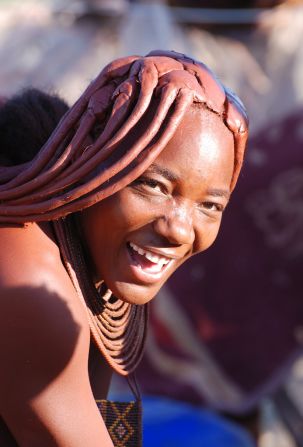Starlight Solace: Finding Quietude and Cosmic Connection in Namibia

For an astrophysicist, the city can feel like a cage. The relentless hum of traffic, the glow of screens, and the ever-present light pollution – they all conspire to obscure the very thing I dedicate my life to studying: the cosmos. That’s why I recently embarked on a journey to Namibia, a land renowned for its vast landscapes and some of the darkest, most pristine night skies on Earth. My quest? To find solace in the starlight and reconnect with the universe.
My Namibian adventure began at Hosea Kutako International Airport in Windhoek. Stepping off the plane, I was immediately struck by the air – clean, dry, and blessedly quiet, a stark contrast to the smog and cacophony of London. The real journey, however, was just beginning.
From Scrubland to Scarlet Dunes: The Road to the Namib
The four-hour drive south from Windhoek to the Namib Desert was a visual symphony of changing landscapes. Initially, the terrain was dominated by scrubland, hardy bushes clinging to the arid earth. But as we journeyed further, the scenery transformed. The vegetation thinned, the soil deepened in color, and the horizon stretched into an endless expanse.
Then, as the sun began its descent, the magic happened. The iconic red dunes of the Namib emerged, their towering forms sculpted by millennia of wind. The setting sun painted the sand in a breathtaking palette of colors – burnt orange bleeding into deep crimson, with long, stretching shadows that emphasized the sheer scale and drama of the landscape. It was a sight that stole my breath away, a powerful reminder of nature's artistry.
Kulala Desert Lodge: Sustainable Luxury Under the Stars
My destination was Kulala Desert Lodge, an eco-friendly haven nestled near Sossusvlei. The lodge’s architecture seamlessly blends into the environment, using natural materials and designs that minimize its visual impact. One of the aspects I appreciated most was their commitment to reducing light pollution. Strategic lighting and downward-facing fixtures ensured that the brilliance of the night sky remained undiminished.
Having heard so much of &Beyond Sossusvlei Desert Lodge, I had to draw a comparison. While &Beyond is known for its sophisticated telescopes and guided stargazing experiences (arguably offering a slightly superior stargazing experience in terms of equipment), Kulala excelled in its sustainable water practices, an especially critical concern in this arid environment. Their innovative water recycling system and conservation efforts were truly commendable.
Ethical Considerations: Acknowledging the Himba People
As much as I was eager to immerse myself in the celestial wonders, I couldn't ignore the ethical considerations of astrotourism. The Kunene region of Namibia is home to the Himba people, an indigenous community with a rich cultural heritage and a traditional way of life.
The potential for the commodification of their culture through tourism is a real concern. I worried about the impact of our presence on their traditions and the need for responsible tourism practices that respect their autonomy and cultural integrity. It's crucial that tourism benefits the Himba communities directly, supporting their livelihoods and preserving their heritage.

The Himba women, adorned in their distinctive ochre-covered skin and elaborate hairstyles, are a testament to the resilience and beauty of their culture. Their presence serves as a powerful reminder of the importance of responsible travel and the need to protect their cultural heritage from exploitation.
Astrophotography Adventures (and Misadventures)
Eager to capture the Namibian night sky, I ventured out with my trusty Pixel 7 Pro on my first night. I'll admit, it was a bit of a struggle. Balancing the phone on my makeshift tripod proved challenging, and the desert dew was a persistent nuisance, constantly fogging up the lens.
I experimented with the phone's "Night Sight" mode, and I was impressed by its ability to capture the faint glow of the Milky Way. However, the limitations were also apparent. The images lacked the detail and clarity that a professional telescope and camera would provide.
Next, I tried using the "SkyView Lite" app to locate constellations. The app's interface was a bit clunky, but after some fiddling, I managed to identify the Southern Cross. As an astrophysicist, I know all the constellations, but it was quite rewarding using the app. This constellation, also known as Crux, served as a vital navigational guide for both European explorers and ancient Namibian cultures. It was a humbling reminder that the stars have guided humanity for millennia.
Immersing in the Landscape: Dunes, Flora, and Fauna
My days in Namibia were spent exploring the incredible landscape. I took a hot air balloon ride at dawn, floating silently above the dunes as the sun painted them in hues of gold and pink. From that vantage point, the scale of the landscape was simply awe-inspiring.

I also joined a guided nature walk, learning about the desert-adapted flora and fauna. The resilience of the Welwitschia mirabilis plant was particularly striking. These ancient, weathered plants, some over a thousand years old, are a testament to the enduring power of life in the harshest environments.
A Taste of Namibia: Beyond Oryx and Mopane Worms
Namibian cuisine is far more than just the typical tourist fare of Oryx steaks and Mopane worms. I had the opportunity to try some truly authentic dishes, including "Oshifima," a thick porridge made from mahangu pearl millet.
The Oshifima had a slightly grainy yet comforting texture. It was served with a flavorful stew of slow-cooked goat, the rich, savory taste a perfect complement to the mildness of the porridge. It was a simple, hearty meal that provided a genuine taste of Namibian culture.
Silence and Starlight: A Final Cosmic Connection
On my final night, I returned to the dunes. This time, I left my phone and technology behind. I simply wanted to observe the stars with my own eyes, to feel the vastness of the universe without any distractions.
The silence was overwhelming, broken only by the occasional rustle of the wind. In the face of such immensity, I felt incredibly small, almost insignificant. Yet, paradoxically, I also felt a profound sense of connection to something larger than myself. The starlight, unfiltered and pure, illuminated the darkness, reminding me of the beauty and wonder that exists beyond our world.
Travel Responsibly: Protecting Namibia's Dark Skies
My journey to Namibia was a transformative experience, a chance to reconnect with the cosmos and find solace in the silence of the desert. But it also reinforced the importance of responsible travel. We must be mindful of our impact on the environment and local cultures, ensuring that our presence benefits rather than harms.
I urge you, if you’re planning on visiting Namibia, to travel responsibly, and respect the land and its people. In particular, I encourage you to support the International Dark-Sky Association's NamibRand Nature Reserve project. By helping to preserve Namibia's pristine night skies, we can ensure that future generations will have the opportunity to experience the same awe and wonder that I felt under the starlight. Learn more about the International Dark-Sky Association's NamibRand Nature Reserve project here: https://darksky.org/
